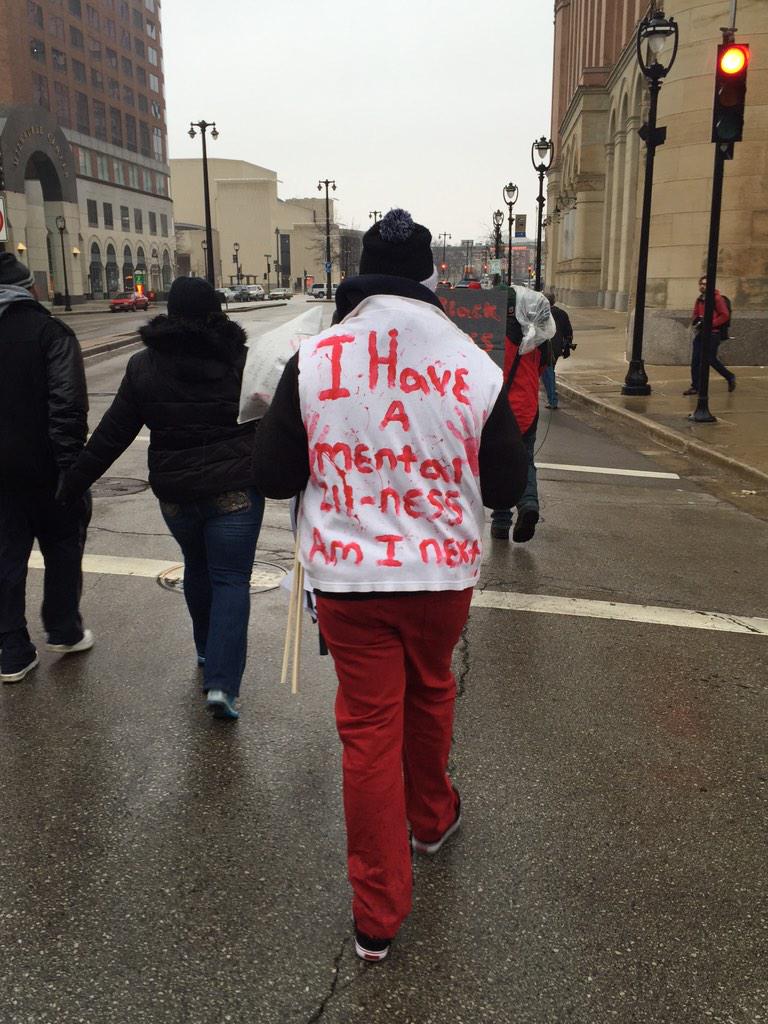In Texarkana on Monday, a woman
called 911 (click for the call) at around 2 AM to report a person in her garage. The woman was frightened and said that she heard banging on the windows from the person in the garage. A police office came to investigate, and found an African-American man holding something in his hand. The officer said the individual came at him in an aggressive manner, and so fired at him,
killing him.
The man was Dennis Grigsby. From the article, "Family members say Grigsby had mental problems." He was holding a spoon, the officer said with the handle up, and the officer thought it was a knife.
The local NBC affiliate
reports:
"Grigsby then allegedly made an aggressive move towards the officer while carrying a metal object. The officer said he ordered Grigsby to stop but he continued to approach, forcing the officer to fire a shot into Grigsby's chest."
His mother
said.
"He was real sweet. He would never hurt anybody. He had a mental illness," said Evelyn Grigsby, Dennis Grigsby's Mother.
She was asleep inside their home when the shooting happened and she says she didn't know her son had left home.
I don't have any information on Dennis' disability, but readers of this blog know how these stories play out, because they happen again and again and again. In this case, Dennis wandered from his house, ended up in the garage, and then started making noise. Perhaps he was trying to get out and was confused. Perhaps he merely was interested in the spoon and the windows. We don't know.
The police officer demanded he comply and shot him when he didn't. It's fairly clear to me that the police officer followed his training, although a man alone in a garage with a metal object is, I believe, someone you could back away from instead of forcing compliance. That's a police strategy point I come back to a lot. There are often other options unless someone is in imminent danger, but we lack the details to judge this one right now.
UPDATE: Notice, though, how the police are reporting the story. Scott Eric Kaufman (of RawStory, but in an email conversation, and quoted with permission), said: "And really, "shank of the spoon"? They're pre-weaponizing it to make the shooting more plausible."
So, another person with disabilities killed by police, as is true of at least 50% of all people killed by police. This one had a spoon. Whether or not the officer should be held accountable is a question I can't answer, but I can demand that this be considered a tragedy and that our thoughts be with Dennis and his family.
That's not, of course, what's happening, at least not in some places. I want to focus now on the combination of hate, mistrust, ignorance, and ableism in this
Facebook thread from the local news, in which some white folks show just how much they either don't get it or don't care. You can click on their profiles, see their beautiful children, their boats, their love of football, their pretty lives, all while reading their lack of empathy for Dennis.
It's a morass of pro-violence speech, reinforcing the #
cultofcompliance, saying that if you don't obey a cop, you deserve to die. One says she feels so sorry ... for the cop. Few express sadness for the victim. Many bluster with bravado, saying that if someone broke into their home, they'd kill them before the cops had a chance (and I believe them). Lots of comment trashing liberals and the liberal media. Lots of comments linking this killing to Garner and Brown and so many others.
It's loaded with ableism, people saying that if Grigsby was so "mentally challenged," he should have been in a home. Here's a sampling.
If he was that mental then he should have been in a home not someone else home! Thank you Brian , if he was that mentally challenged , why was he not in a facility that could take care of him ? Does not make sense that he was able to make the decision to even break into someone's house if that mentally ill . Mental illness is a very bad thing for any family to deal with and sometimes they can not control the person with the mental illness because they get out of control , so I do understand the hurt that his parents and family are feeling ! I do understand both sides if this story and I think Channel 12 is doing a great job with this story cause they are covering both sides of it with all the details they have ! We have to have officers on the street to protect us ! If not what would this world be ???? Just saying ...... Put you damn hands up!!! It's not that hard. Even go to the ground. You retards wanna play badasses till you get 3 in your chest.And then there's this.
Ray says - call a crackhead if you hate cops.
Stuart, in what I think is a libertarian critique, shows a picture of what is likely Nazi (or other fascist execution), saying "Never forget that this was legal at the time ...what unjust actions has your government codified into action?"
Then Kenny says that everyone on death row should be treated this way, pistol to the back of the head. Save the taxpayers some money.
This is the divide in America. That even in a situation when police kill a black man with intellectual disabilities who was only holding a spoon, there's no sympathy, no empathy, and certainly no second thoughts. The Cult of Compliance lives on in these people.

































